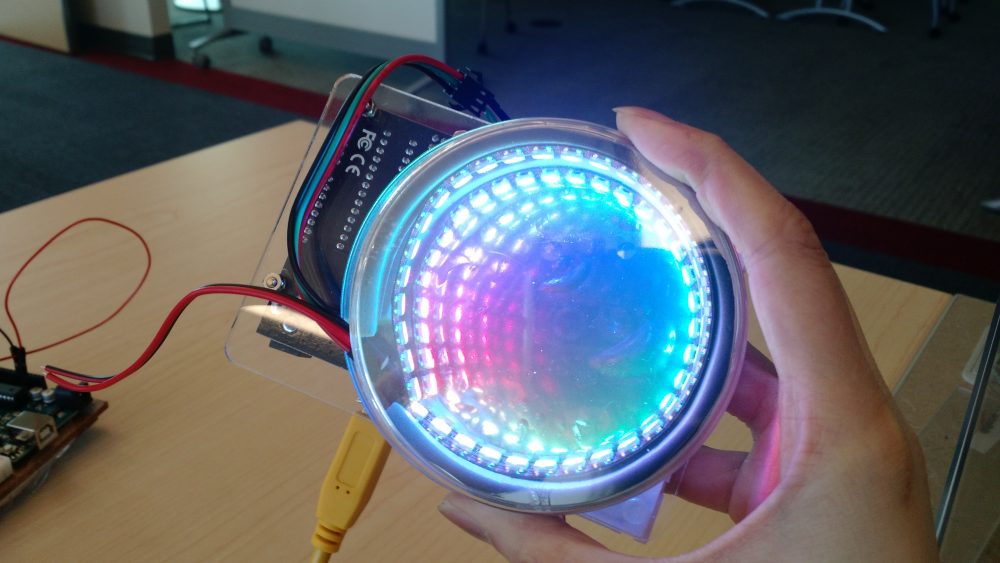We're making a tilt-activated kaleidoscope in today's workshop! @UVicDSCommons pic.twitter.com/6dw2nyNqqh
— Tiffany Chan (@TiffChan29) February 27, 2018
For our second project-focused Arduino workshop (see here for the first), we made an infinity mirror kaleidoscope that changes colours when tilted. We used petri dishes for the kaleidoscope “body” and LED strips made specifically for Arduino. Attaching semi-reflective and semi-translucent mirror film to the petri dishes created an “infinity mirror” effect, where two reflective mirrors face each other, making it appear as though there were infinite rows of lights receding into the distance. This effect is widely used in Fine Arts. For example, Yayoi Kusama is famous for her infinity rooms: rooms with brightly-patterned walls that seem to go on forever.

Yayoi Kusama, “Infinity Mirrored Room – The Souls of Millions of Light Years Away,” Image from the Art Gallery of Ontario.
A tilt sensor attached to the back of the kaleidoscope completes the effect. The tilt sensor acts like a switch, switching the colour from red (not tilted) to blue (tilted). A tiny metallic ball inside the sensor detects changes in current and pass this information along to the Arduino.
Thanks @TiffChan29 for the cool workshop! pic.twitter.com/DD1PDUKevg
— Heidi Rennert (@heirenne) February 28, 2018
We hope to have more fun workshops in the future! You can see the PDF instructions here, including a list of materials, ways to modify the code, and a list of further resources.

